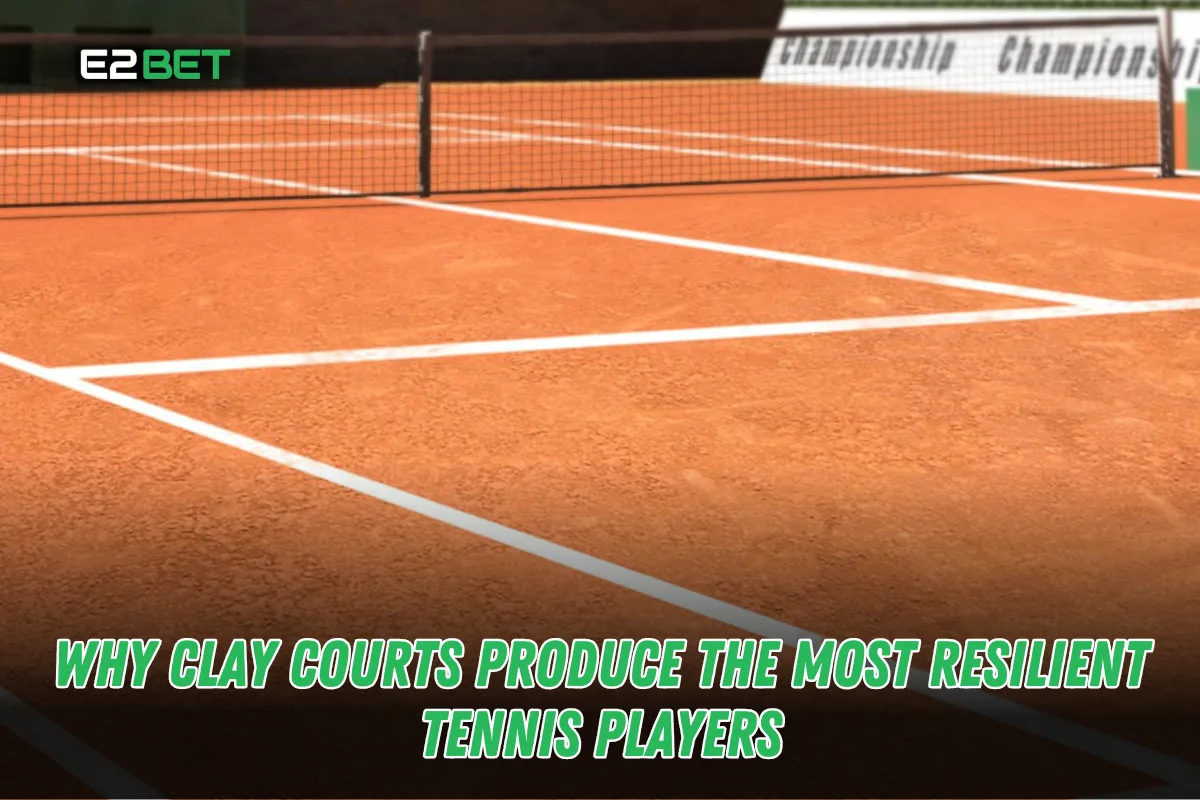Tennis is a sport played on various surfaces, each offering unique challenges. Among grass, hard, and clay courts, the latter stands out as the ultimate test of resilience. Clay courts slow down the ball, extend rallies, and demand exceptional physical and mental endurance from players. This is why the French Open, held at Roland Garros, is one of the toughest Grand Slam tournaments. Many top clay court players in history, including Rafael Nadal, have demonstrated unmatched endurance on this surface.
This article explores why clay courts produce the most resilient tennis players, shaping them into formidable athletes who can adapt to all surfaces. Whether you’re looking to train for a clay court tennis tournament, understand the best strategies for playing on clay, or simply appreciate the unique demands of this surface, you’re in the right place.
What Are Clay Courts and How Do They Differ?
Understanding Clay Courts
Clay courts are made of crushed stone, brick, or shale, providing a softer, more absorbent surface than grass or hard courts. The slow speed and high bounce of the ball make clay an ideal surface for defensive players who rely on patience and stamina.
Comparison With Other Tennis Surfaces
- Grass Courts – Fast-paced, lower bounce, favoring aggressive serve-and-volley play.
- Hard Courts – Balanced speed and bounce, making them the most neutral surface.
- Clay Courts – Slower ball speed, high bounce, requiring endurance, patience, and strategic play.
Why French Open is the Ultimate Clay Court Test
The French Open 2024 is a true test of a player’s ability to handle long rallies and grueling matches. Matches often last longer than on hard or grass courts, proving that clay court tennis tactics demand superior endurance.

The Physical Challenges of Clay Court Tennis
Longer Rallies and Endurance Demands
Due to the slow ball speed on clay courts, players must engage in longer rallies, requiring greater physical conditioning and stamina. Tennis training camps for clay courts emphasize endurance workouts, helping players build resilience.
High Bounce and Footwork Adjustments
Clay’s surface causes the ball to bounce higher, making topspin-heavy shots more effective. Players must develop quick footwork and learn to slide on clay courts, which allows them to recover quickly and stay balanced during play.
Mental Toughness Required for Clay Court Tennis
Patience and Strategic Play
Unlike faster surfaces where quick points are common, clay demands careful point construction. Players must learn to use angles, neutralize aggressive shots, and capitalize on their opponent’s weaknesses. Gustavo Kuerten, a three-time Roland Garros champion, mastered this approach.
Adaptability and Defensive Skills
Playing on clay forces players to develop defensive skills. Defensive players succeed on clay courts because they learn how to extend rallies, absorb pressure, and find opportunities to counterattack.
How Clay Courts Shape Tennis Players’ Skills
Importance of Footwork on Clay
Clay courts require precise movement and sliding techniques. Clay court tennis training programs focus on agility drills, allowing players to move efficiently without losing balance.
Developing Topspin for Clay Court Success
Topspin is crucial for clay court success. Many great clay court specialists generate extreme spin to keep the ball bouncing high, making it difficult for opponents to attack.
Clay Court Legends and Their Success
Rafael Nadal – The King of Clay
With a record-breaking number of French Open titles, Rafael Nadal’s clay court dominance is unmatched. His fitness training for clay court matches and relentless mindset make him the ultimate example of resilience.
Other Notable Clay Court Champions
- Bjorn Borg – His incredible stamina led to six French Open titles.
- Carlos Alcaraz – A rising star who has already shown exceptional skill on clay.
How Clay Court Training Benefits Players on Other Surfaces
Translating Clay Court Skills to Hard and Grass Courts
Players who develop their game on clay gain advantages on all surfaces. The patience, endurance, and defensive play learned on clay help them adapt to faster courts.
Challenges of Transitioning to Hard and Grass Courts
The biggest challenge when moving from clay to hard or grass courts is adjusting to faster-paced rallies and lower bounce. However, many top tennis players successfully make this transition.
Conclusion
Clay courts demand more than just talent—they require resilience, endurance, and adaptability. The players who master clay develop an unshakable foundation of skills that serve them well on any surface. Whether it’s the legendary dominance of Rafael Nadal or the promising rise of Carlos Alcaraz, clay continues to be the ultimate proving ground for tennis greatness.
FAQs
Q1. Why do clay courts make players more resilient?
Ans. Clay courts slow down the ball and extend rallies, requiring players to develop endurance, patience, and strong defensive skills.
Q2. What are the biggest clay court tournaments?
Ans. The French Open (Roland Garros) is the most prestigious clay court tournament, followed by ATP Masters events in Madrid, Rome, and Monte Carlo.
Q3. How can I improve my clay court game?
Ans. Focus on fitness training for clay courts, develop topspin-heavy shots, and practice sliding techniques to enhance movement.
Q4. Why do defensive players succeed on clay?
Ans. The high bounce and slower ball speed favor defensive players, allowing them to extend rallies and wear down opponents.
Q5. Where can I train for clay court tennis?
Ans. You can join tennis training camps for clay courts or hire a clay court tennis trainer to refine your skills.